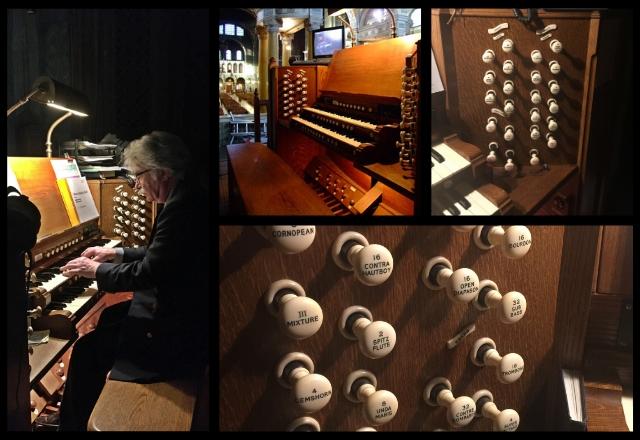I am sure a question that none of us can resist putting to any accomplished professional organist we might meet is – ‘which organ does he or she consider to be the best they have ever played’?
We all have genuine curiosity on that topic, one which of course is in reality impossible to split from the building’s contribution to the experience. I am sure we have all experienced average instruments in a great building that are more enjoyable than wonderful instruments in a poor acoustic. The question is therefore almost unanswerable but none the less I for one continue to ask it.
Many years ago now I had the pleasure of meeting Carlo Curley and inevitably I put the question to him. Without hesitation he offered the great Grand Organ of Westminster Cathedral as his UK choice so it is perhaps a little surprising that, until recently, I had not made much effort to get a private session there.
Finally – and no doubt prompted by our involvement in the performance of Jean Guillou’s La Revolte des Orgues in November 2019 – I arranged just such a session with Peter Stevens, who currently heads up the music there, which took place on an evening in early March. Reviewing this blog today with our country locked down that now seems an age away.
Peter gave my colleague Richard Goodall and myself a very informed tour of both the Apse Organ and the huge Grand Organ at the West End, as well as relating interesting detail of the background history that leads to the set-up in place today.
History of the Apse Organ Console
It’s interesting to start with that history via a look at the original Apse console, from which both the Apse and West End instruments were fully playable. In fact, the original scheme for the Cathedral was to work with a West End organ alone, but happily the architects were eventually persuaded to include an organ in the ‘Choir’ as is the practice in most French Cathedrals.
This makes the job of accompaniment so much easier since the organ pipes, organist and singers are more or less in the same place – especially back then, in the days before video links and audio headset feeds were commonplace! But, from this position, the organist remained in touch with proceedings below him at the altar by the tried and tested means of a large mirror positioned high up in the roof.
You can just see that, still there 100 years on, in the picture. Although now it is very cloudy or in need of a good clean.
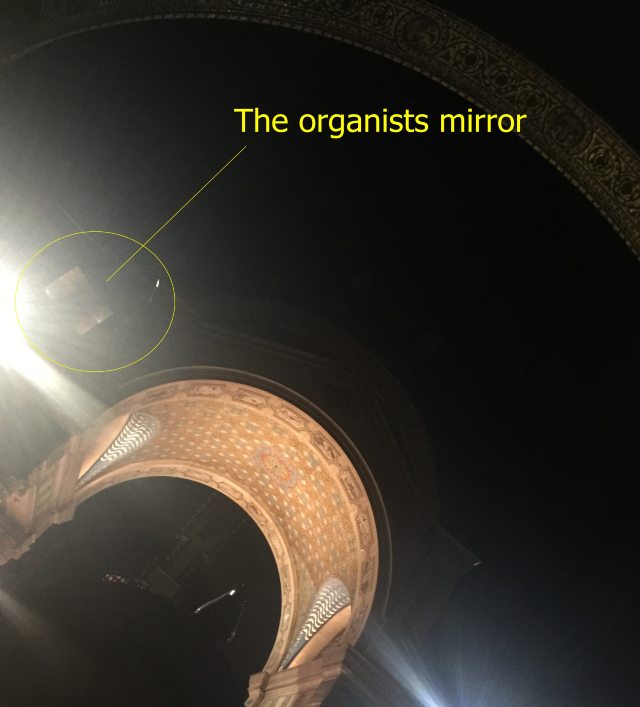
The local ‘Apse Organ’ as it is known was in two cases to the north and south of the choir. You can see the north case to the right of the console picture. No pipes are visible but a lattice work façade allows the sound out. These cases remain today, albeit re-positioned slightly further to the east in the Apse.
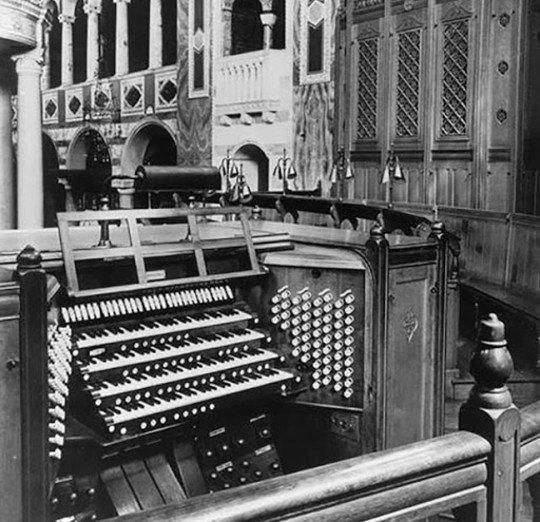
So, in the original scheme, the organist had full control of both organs from the console in the centre of the Apse. But then things changed. Nothing is for ever!
A new smaller Apse Organ Console
Perhaps it was felt the organist’s position dead centre and directly above the altar was inappropriate. Whatever the reason – now lost in the mists of time – a new and much smaller ‘Apse’ console was built and placed on the south side.
The organist is now tucked away in the shadows and facing north, as opposed to being centre stage and facing west. This two-manual console plays the Apse Organ but also makes provision for direct playing of 15 of the West End Organ’s stops. Take note that one of those is the Tuba Magna 8’, perish the thought that that stop would not be available to the Apse organist!
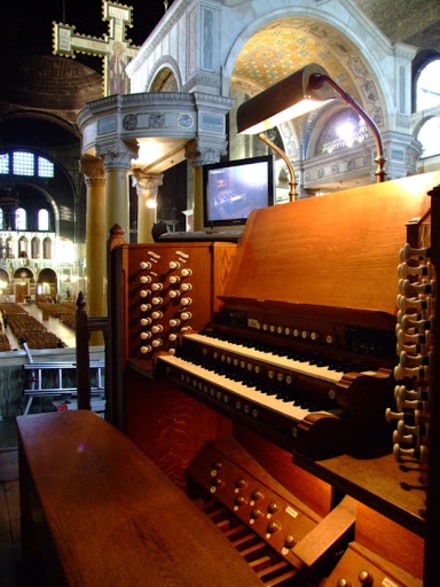
That was how the set up stayed for many years until a more sophisticated capture action linked both consoles, so pistons at the Apse Organ can now manage all of the Grand Organ stops. These have to be set at the West End and there is also no management of the West End swell boxes at the Apse console. But Peter showed that clever use of the stepper can take the Grand Organ through 40 generals allowing for a very effective, gradual general crescendo to be managed at the Apse console.
A complex setup at Westminster Cathedral
Are you still with me? Is this one of the more complex set ups you have ever heard of?
So while you are contending with all this there is also just the matter of about a 1/3 second time difference to contend with as well. I found this overwhelmingly hard and fell off the keys very quickly. Coming to the musician’s rescue are headphones that allow you to hear both east and west ends together but this difference in timing does allow for a really magical party trick.
Are you familiar with the Saint-Saens Fantasy in E flat? If not take a look at this recording.
You will see it starts with a sequence of repeated chords, with one manual echoing another. But, if played at the Westminster Apse Organ with West End coupled you need only play the first chord once as its manuscript counterpart arrives at just the right time all by itself! What fun to have to do only half the work!
Not a straightforward job for the musicians
The Apse Organ has real charm and delicacy as you would expect for its principal role of accompaniment. There is power there too as the full chorus, and especially the great mixture, give enough to pull along the congregation, well at least that part of it at the east end half of the nave.
You will be gathering by now that the musician’s job here is far from straightforward, so this is not a role you can parachute into at short notice. You must be familiar with the instrument and especially its various links to the West End.
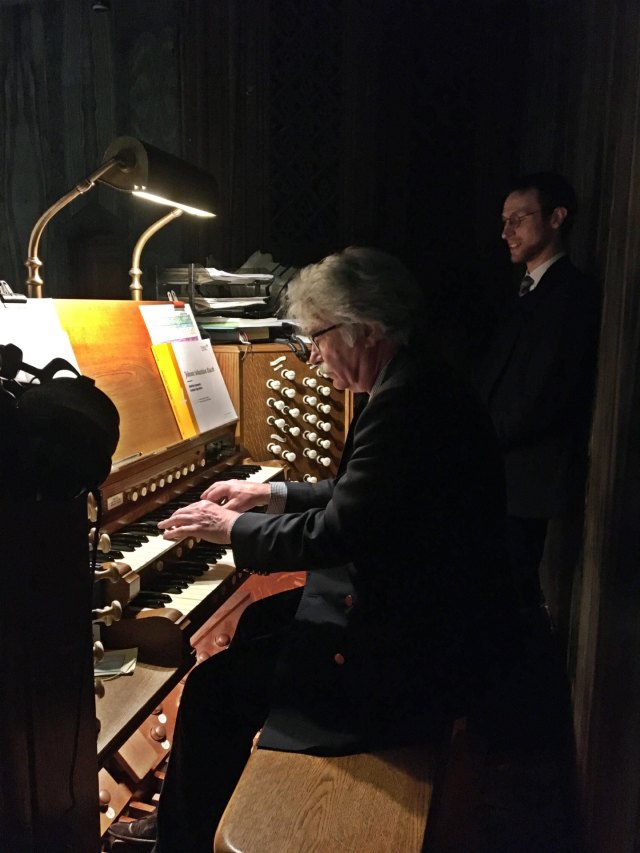
The Apse console sits just below a Juliet balcony that is mirrored on the north side. Peter explained that, when first designed, the building was planned to be run as a monastic community under the charge of an abbot with the offices sung each hour throughout the day.
It was apparently intended that the new Catholic Cathedral would put on the formal services that the Anglican Abbey just down the road had long since abandoned. This balcony was therefore intended to be a private location from where the abbot would be able to observe the offices – but of course this purpose never came to be used. It is however known that Benjamin Britten and Lennox Berkeley were seated there for the first performance of Britten’s own Missa Brevis which was written for the Cathedral.
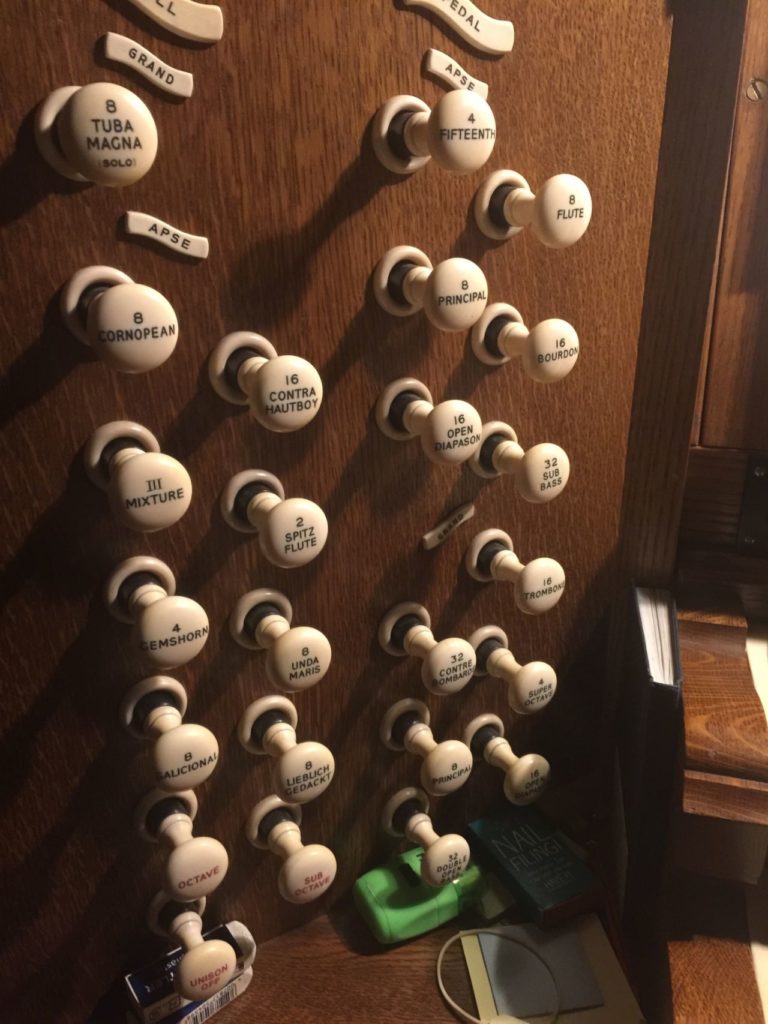
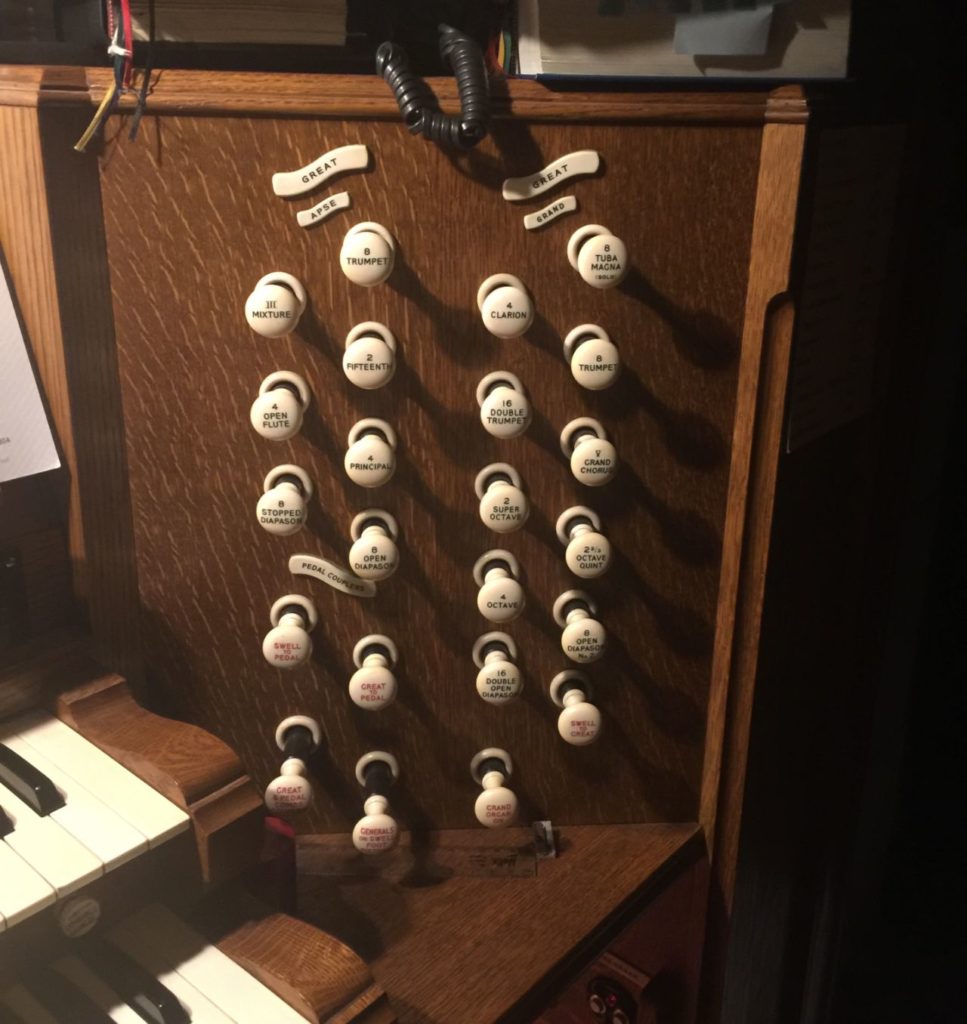
The Grand Organ at Westminster Cathedral
So, after about 45 minutes taking this relatively small instrument on board, we climbed some stairs and travelled the 80 metres or so along the upper gallery to the Grand Organ – an experience which completely blew me away.
Read about my experience playing the Grand Organ in Part 2 of this story – The Grand Organ of Westminster Cathedral.
I have had a passion for church organs since the tender age of 12. I own and run Viscount Organs with a close attention to the detail that musicians appreciate; and a clear understanding of the benefits of digital technology and keeping to the traditional and emotional elements of organ playing.
